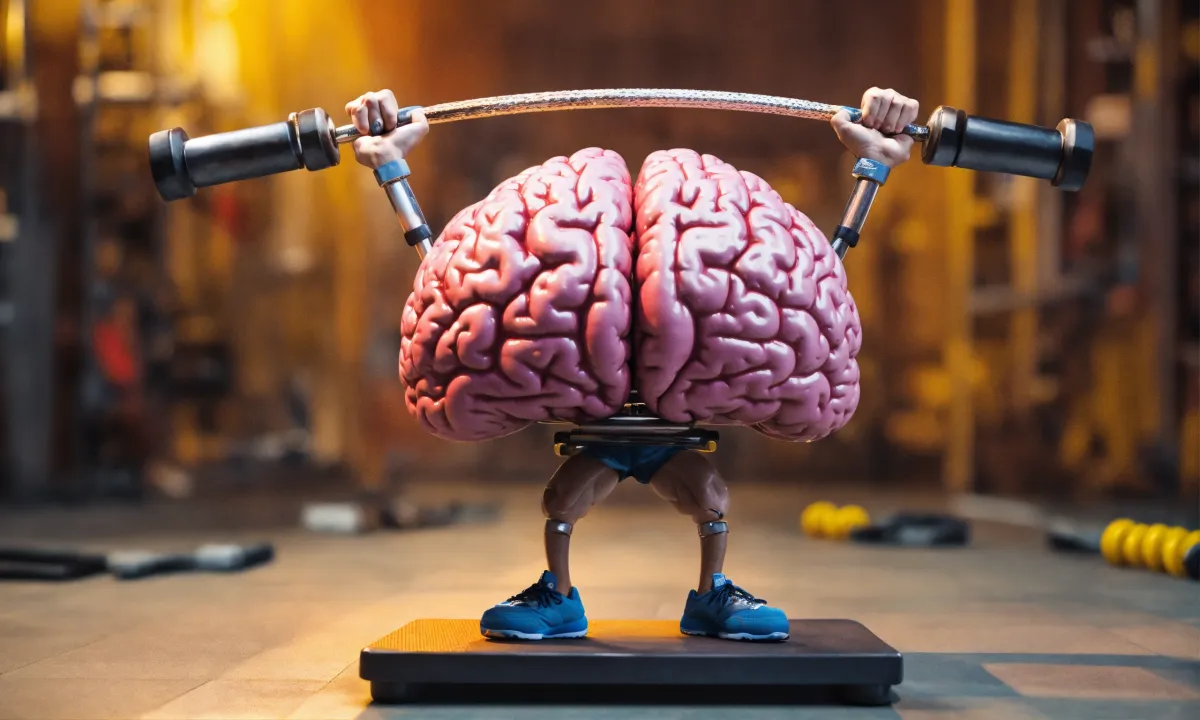Unlock Success: How to Coach Youth Sports Psychology
Mental skills training to help kids enjoy a lifetime in sport.

Sport psychology sounds scary. Maybe it's not for kids.
To find out, I asked Dan Abrahams, a Premier League sports psychologist who teaches basic mental skills to young athletes.
“Sports psychology is big!” says Dan.
“It can sound quite scary for youth sports parents and coaches. But...
...it can help on so many levels!”
So, why is sports psychology important in youth sports?
“For young players, sports psychology can be very useful from a mental skills training standpoint,” says Dan, before putting together the following list of benefits of mental skills training for young athletes.

How does sports psychology help youth players?
9 benefits of youth sports psychology:
- Develops character
- Boosts participation
- Improves concentration
- Teaches emotional control
- Progresses sporting performance
- Removes fear and anxiety on the field
- Teaches confidence and how to boost it
- Increases players’ enjoyment of the game
- Helps players find the right intensity (being 'activated')
Sport psychology sounds pretty beneficial then.
But is it too complicated for the average volunteer youth sports coach to implement?
How to coach youths sports psychology
“I am a big believer that parents and coaches can teach very basic mental skills to all young players,” says Dan.
“For very young athletes, of course, performance is not a priority, but when developing new skills, it is very difficult to develop if you are struggling from a mental perspective."
"So coaches and parents can introduce basic mental skills to aid performance and development at any age.”
The Four C's of youth sports psychology
“Sports psychology can help players to motivate themselves," says Dan. "It can help them learn the four C's."
→ Concentration
→ Commitment
→ Confidence
→ Control
“It helps coaches to help players develop character. Help them build their capacity to focus their attention, to deal with distractions, to deal with inhibitions and fear, and to play at the right intensity level — to not get overly intense or underly intense in a game — “activated” is the word we use in sports psychology.”
“Sports psychology helps in what I call the three Ps: participation, progression and performance. Some really basic mental skills help young players develop in all these important areas.” — Dan Abrahams
So learning these basic mental skills and how to apply them sounds like a pretty useful practice for youth sports players, parents and coaches alike.
“Essentially, sports psychology is helping players to execute every action in a positive manner,” says Dan.
“I think these skills are useful, if not imperative, for young players to enjoy the game and continue to participate in sports for a lifetime.”
Next question: How?
How youth coaches and parents can use sports psychology help young athletes develop
“Let’s put this in perspective,” stresses Dan. “8, 9, and 10 to 14 years old is probably not a time when you’re that focused on performance. You’re more focused on having fun.”
“But it can still be helpful to introduce some very basic mental skills so you can aid performance at that age.”
“I have a bunch of basic mental skills I like to teach young players, and I like to bring them alive using terms like ‘Game Face’ and ‘Squashing Ants’.
Let’s break these skills down.
Mental Skill #1: Game Face
What’s a game face?
“A game face is the personality you want to have on the pitch when playing your sport,” says Dan. “It’s who you want to be. It is the attitude you want to portray.”
“The game face technique has a participative, progression and performance aspect to it and can help players in many ways.”
“It is interesting because it’s something an 8-year-old or 10-year-old can have. Equally I’ve got a client who plays in the English Premier League and he uses a game face. I work with a member of the US women’s national soccer team, and she uses a game face too. So I think everybody can have a game face.”
An example of the game face of a top soccer player:
“One of these clients of mine has a game face of ‘relentless and dominant’.
“So when they go on the pitch one of their objectives is to be relentless and dominant. So their internal narrative going into a match is:”
Relentless and dominant. My job on the pitch is to be relentless and dominant. Nothing and no-one takes me away from relentless and dominant. If I give the ball away, I’m going to stay relentless and dominant. If I miss a chance to score, relentless and dominant. If we go a goal down, relentless and dominant. I’m going to be relentless and dominant non-stop and nothing and no-one takes me away from relentless and dominant.
“That was during a huge soccer final, but this is very relevant for young players too, because I work with plenty of 10 to 14 year olds and with youth sports coaches who use this technique of a game face effectively with their players.”
How youth sports coaches can create a Game Face with players
Here are Dan’s directions to helping young athletes discover their own game face — which he believes will help more players enjoy themselves, progress and perform on the field of play.
- Your best game. In a quiet environment, ask players think about and describe their best game. Coaches or parents can ask: “Tell me about you at your best. What does your best game look like? What does your best feel like? What do others see on the sidelines when you are playing at your best?”
- Your dream game. Next, ask players to think about and describe their dream game. Use questions like: What does a dream game look like to you? How would it look and feel if you were to perform the way you dream to?
- Action-based words. The key is to get back some action-based words from the player describing their best games and dream game. Action-based words could include: confident, alive, lively, fun, upbeat, cool, athletic, calm, dominant, relentless, sharp, focused, happy, loud, alert, relaxed, etc. These are words that players are able to be, or act out, or do. “Every player is different,” says Dan, “so it’s important to get them to describe their performance in their own action-based words.”
- Agree on one or two action-based words to make up the athlete’s game face — the personality and attitude they want to portray on the pitch.
- Have fun with it. Now encourage players to pick an animal or hero to add to their action-based words. Ask: “If you were an animal playing like this what animal would you be?” Dan says: “It might sound a bit strange but animals have superhuman capabilities and when you think of being that animal, it empowers you.” Alternatively, the player might choose the name of their sporting hero — a top, almost superhuman performer in their position.
- Put it all together. Game faces are most fun for children when they’re a mix of action-based words, plus an animal or hero. Examples could include: Happy, lively LeBron; Dominant, athletic cheetah; Fun and focused; Confident, relaxed Ronaldo.
- Try it on. Finally, challenge players to show you that game face during the next practice session or game.
- Reflect and rework. Ask players for feedback. Did the game face feel right? If so, encourage them to keep using it. If not, try adjusting the game face with new action-based words, animals or heroes.
A good game face is a mental skill to help athletes of all ages and abilities.
“If a 10 year old has a game face, there’s more chance of them enjoying themselves and progressing and performing,” says Dan.
“If they’re feeling flat and lethargic, they can do their best to be in their game face. To act it, to do it. This reminder can re-energised you, lift your body language and get you on your toes ready to move. If they make a mistake, they come back to their game face. If they are feeling anxious or angry? Game face.”
Mental Skill #2: Squashing ANTs
What’s an ANT and how do you squash it?
“I always have some fun with a group of players with this one,” says Dan. “I tell them ants are the biggest killers in sport. And that ants are their own biggest killers!”
Then Dan reveals ANTs are not really insects. Instead, it’s an acronym for “Automatic Negative Thoughts”.
“We’re all going to have negative thoughts. That’s how we’ve evolved as human beings. It’s a survival mechanism; we tend to have a negative brain. ANTs are natural things. So it’s okay. We’ve just got to do something with them.”
How?
“I make it the players job on the pitch to ‘squash ANTs’,” answers the sports psychology expert, who describes how youth coaches can teach this basic yet valuable mental skill to young athletes.
How youth sports coaches can help players Squash ANTs
- Talk to your group. Before a session, or in a quiet environment, lightheartedly introduce what ANTs are like Dan does above: “Did you know ANTs are the biggest killers in sport? And ANTs are your own biggest killers on the pitch!”
- Explain. Reveal the ANTs you’re talking about are not really insects, but Automatic Negative Thoughts.
- Give examples. Automatic negative thoughts are when a player is self-critical and beating themself up with thoughts like, “I’m not playing well today”; “Stop messing up. If I make another bad pass I’m going to be taken out of the game”; “I can’t believe I missed that chance. I’m never going to score today”; “This opponent is too good for me.”
- Offer reassurance. Tell players ANTs are natural, and inspire them with the news that even top professional athletes who compete in World Cups, Olympic games and every top sports league in the world get automatic negative thoughts too!
- Challenge. Tell players that ANTs can be squashed and it’s their job to squash them — which is how professional athletes overcome their own automatic negative thoughts.
- Show them the way. When players start to get down on themselves or their performance, this is an ANT crawling into their brain. This is the time for players to utilize their game face from above. Challenge athletes to think of their game face, to act it out, and be it.
- Practice! Practice! Practice! Before team practices, or before a particular training exercise, coaches (and parents too) can remind players to practice squashing ANTs when they show up by thinking of their game face.
- Help each other out. Sometimes coaches will recognize when players are thinking negatively. Step in, and verbally encourage players to get back to their game face.
- Build an ANT-squashing culture. Encourage players to look out for their teammates if they seem upset. Teammates can remind each other to keep squashing ANTs and to remember their game faces.
“This builds a leadership and team-ship element to these individual basic mental skills,” says Dan, which only strengthens their effectiveness.
So there you have it. Two simple, fun and beneficial mental skills for coaches to help unlock potential of youth sports players, courtesy of Dan Abrahams.
We hope these skills help you become an even more impactful coach.